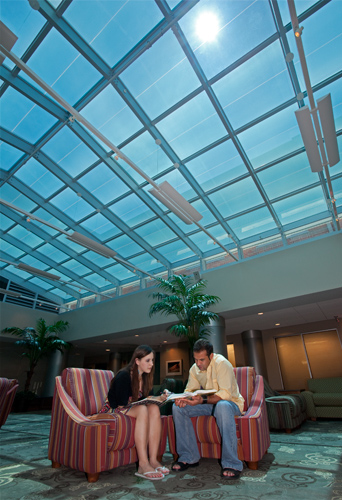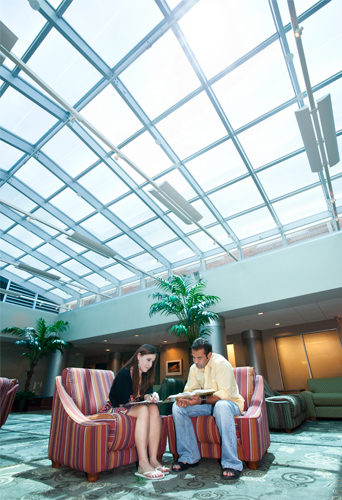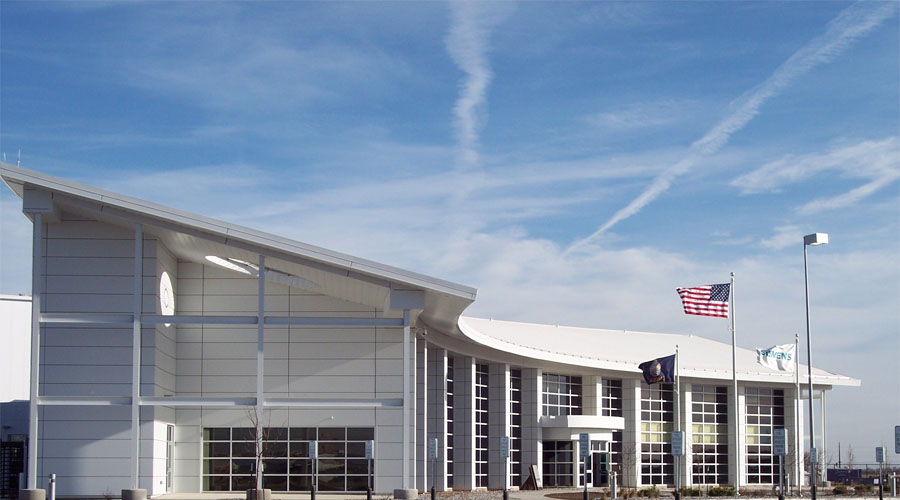We are planning a three season porch addition, and I am wondering if it might be cost effective to consider Sage windows for this application.
Thoughts?
Dave
Blog Post


I've examined state-of-the-art windows and glazing systems over the past four weeks. This week, I'll cover an innovative product that may help define the state-of-the-future: a dynamic glazing called SageGlass that can be tinted on demand. To understand what's so exciting about such a product, let's look at conventional high-performance windows.
When we select a window for a particular application we have to determine what performance properties will be best for that particular application--on average. In the winter and for daylighting in all seasons, we usually want to maximize sunlight transmission, while in summer and for certain windows at particular times of day we usually want to restrict solar gain to control glare or unwanted heat gain.
By carefully choosing the glazing, we can do a pretty good job at balancing those differing priorities--but it is always a matter of compromise. If we want to be able to vary the sunlight coming through a window we have historically had to rely on a separate system, such as an interior window blind or exterior shading system. In an office building, these systems can get pretty complex.
Enter dynamic glazingsWith dynamic, or switchable, glazing, we can adjust the solar and visible transmittance properties of the glazing according to the conditions. Dynamic glazing can be passive, with tinting controlled by temperature (thermochromic) or by sunlight (photochromic), or they can be controlled by electricity (electrochromic). With the latter, tinting is actively managed by the user, though the process can be automated. SageGlass, the electrochromic glazing made by Sage Electrochromics, is the only widely marketed dynamic glazing on the market today, and the company has made some significant advances since I last covered the product in this blog a few years ago.
SageGlass relies on a low-voltage electric current to tint the glazing. The company uses a sputtering process (like that used to produce soft-coat low-e glazings) to coat a pane of glass with five extremely thin, highly specialized ceramic layers. These coatings are typically applied on the #2 surface (the inner surface of the outer pane of glass). When voltage is applied across these coatings, according to Sage, ions travel from one layer to another, prompting a reversible solid-state change that causes the coating to tint and absorb light. Reversing the polarity of the applied voltage causes the ions to migrate back to their original layer, returning the glass to its clear state.
The electrochromic coating in SageGlass is also a low-e coating, so whether or not the tinting is employed, heat loss through the window is reduced, as it is with other low-e glazings. The electric current needed to tint the glass is very small (about 0.3 watts per square foot of glass), and even less current (0.1 watt/square foot) is required to maintain the tinted state. When the current is turned off, it reverts to the normal, clear, state.
BuildingGreen relies on our premium members, not on advertisers. Help make our work possible.
See membership options »This level of electricity consumption is quickly paid for my reduced cooling loads when the tinting is deployed--at least in commercial buildings, where SageGlass is most commonly used.
I had an opportunity to talk with the Sage Electrochromics CEO, John Van Dine, recently, and learned about some exciting innovations. The biggest recent development is the ability to set intermediate levels of tinting. When SageGlass first came out, it was either in its clear or tinted state, with solar transmittance of 62% and 3.5%, respectively (assuming the coating is on standard clear glass in an insulating glass unit or IGU).
Now, when this variable tinting option is included (for an upcharge), SageGlass can be "programmed" with two intermediate tinting levels. This provides much greater flexibility for the user, since the fully tinted state is darker than what most users would want. One of the intermediate tinting levels is typically set at 15-20% visible light transmission and the other at 35-40%.
An advance that is being actively worked on but is not yet available with SageGlass is powering the tinting using photovoltaic (PV) electricity. With this feature, the installation may be simpler if the power system is integrated into the grass or frames somehow. We'll have to see how that feature evolves.
A new factorySage Electrochromics has a new factory nearing completion this month, though it will take several months to fully commission the manufacturing equipment. SageGlass production will be significantly automated, and much larger IGSs, up to five feet by ten feet, will be able to be produced.
While the automation in the new plant should eventually bring prices down (SageGlass is not an inexpensive product!), Van Dine cautioned that "you will not see a big price reduction initially." Because of the customization with most glass orders, pricing is heavily dependent on the volume of SageGlass needed for a project, the number of different glazing sizes in the order, special shapes, laminated and other specialty glass needs, the number of control zones, and what degree of control functionality is needed. While the company is reluctant to mention specific costs, given these variables, I gather that, for a typical project, incorporating SageGlass into IGUs will add about $50 per square foot, but for small projects the cost can be significantly higher.
Van Dine emphasizes that SageGlass offers not just glazing, but an entire solution to fenestration control. It can replace both exterior shading systems and interior blinds--which in commercial buildings can be very pricey. When the SageGlass system is compared with these multiple systems (glazing plus separate glazing attachments), SageGlass can be quite cost-competitive.

The company has partnerships with more than a dozen manufacturers of commercial glazing systems, residential windows, and skylights. Residential windows and skylights that can now be ordered with SageGlass include Marvin, H Window, and Wasco Skylights.
To date, SageGlass has been installed in hundreds of projects, but it plays a major role in the overall lighting control in significantly fewer. The product is extensively used in a new 300,000 square-foot Siemens wind-turbine facility that has just been built in Hutchinson, Kansas. During the design of that facility, the SageGlass option came out less expensive than two other sunlight control strategies that were evaluated and more expensive than a third--which was a very simple shading system.
Sage Electrochromics is located in Faribault, Minnesota, about 40 minutes outside of Minneapolis. Several years ago, Saint Gobain, the world's largest building products company, invested in the company and is now a majority owner.
Alex is founder of BuildingGreen, Inc. and executive editor of Environmental Building News. Watch for a forthcoming BuildingGreen special report on windows. To keep up with his latest articles and musings, you can sign up for his Twitter feed.
Published April 17, 2012 Permalink Citation
(2012, April 17). Cutting-Edge Windows that Can Be Tinted on Demand. Retrieved from https://www.buildinggreen.com/blog/cutting-edge-windows-can-be-tinted-demand
We are planning a three season porch addition, and I am wondering if it might be cost effective to consider Sage windows for this application.
Thoughts?
Dave
Add new comment
To post a comment, you need to register for a BuildingGreen Basic membership (free) or login to your existing profile.